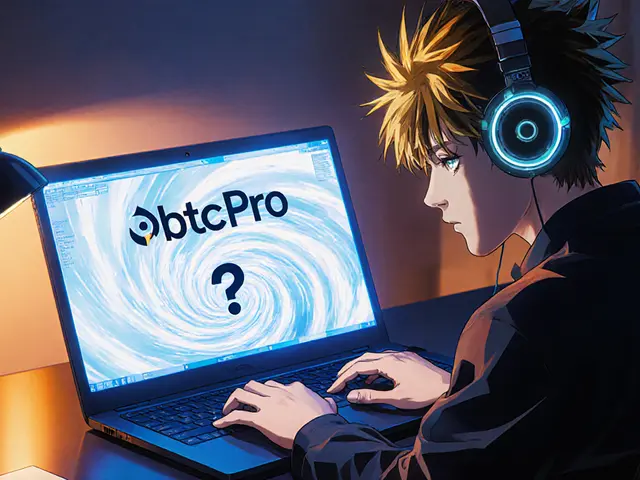TIPon Value Calculator
TIPon vs Traditional TIP ETF Value Calculator
This tool estimates the value of your TIPon tokens compared to the traditional iShares TIPS Bond ETF (TIP), considering fees, liquidity, and market conditions.
Input Your Holdings
Estimated Value
How This Works
This calculator uses the current market price of TIP ($111.61) and TIPon ($111.45) to estimate the value of your holdings. It also factors in the mint/redeem fees (default 0.5%) which can impact your total value.
Note: Each TIPon token is designed to represent one share of the TIP ETF, but due to market conditions and liquidity constraints, there may be discrepancies in value.
Key Metrics
TIP Price (Oct 20, 2025)
$111.61TIPon Price (Oct 20, 2025)
$111.4524-hr Volume Range
$2 - $209kTIPon is the tokenized version of the iShares TIPS Bond ETF, created by Ondo Finance on the Ethereum blockchain. It lets investors hold an ERC‑20 token that mirrors the performance of Treasury Inflation‑Protected Securities (TIPS) without needing a US brokerage account.
What Exactly Is TIPon?
TIPon stands for “iShares TIPS Bond Tokenized ETF (Ondo)”. The token is an ERC‑20 token with contract address 0x2df38ca485d01fc15e4fd85847ed26b7ef871c1c. Each TIPon token represents one share of the traditional iShares TIPS Bond ETF (ticker: TIP), which holds a basket of U.S. Treasury Inflation‑Protected Securities.
How Does the Tokenization Process Work?
Ondo Finance operates a mint‑and‑redeem mechanism. Accredited users deposit cash on the Ondo platform, which then purchases the underlying TIP shares on the NYSE. The platform issues a matching number of TIPon tokens on Ethereum. When a holder wants to exit, they send TIPon back to the platform, which redeems the corresponding TIP shares and returns cash.
This flow creates a 1:1 price relationship: TIPon’s market price tracks the closing price of TIP, adjusted for any fees incurred during minting or redemption.
Why Someone Might Choose TIPon Over the Traditional ETF
- 24/5 on‑chain trading - No need to wait for NYSE’s 9:30 AM‑4 PM ET window.
- Global accessibility - Investors outside the US can gain exposure without a US brokerage or tax‑ID.
- Instant settlement - Transfers settle on the blockchain in minutes, eliminating settlement risk.
- Programmability - TIPon can be integrated into DeFi protocols for lending, collateral, or automated strategies.

Key Drawbacks and Risks
- Liquidity crunch - Reported 24‑hour volume ranges from a few dollars on Holder.io to about $200k on Crypto.com, far below the $1.2 billion daily volume of the underlying TIP ETF.
- Concentration of holders - Etherscan shows only 4-16 unique addresses, raising concerns about market depth.
- Regulatory uncertainty - The SEC has not formally approved tokenized ETFs; Ondo flags “additional restrictions apply”.
- Gas fees - Minting, redeeming, or even transferring TIPon requires ETH gas, which can add up during network congestion.
- Platform risk - Users rely on Ondo’s custodial processes; any breach could affect token value.
Current Market Snapshot (October 2025)
| Metric | TIPon (ERC‑20) | TIP (NYSE) |
|---|---|---|
| Price (Oct 20 2025) | $111.45 | $111.61 |
| Market Cap | $11.2 M | $21.5 B |
| 24‑hr Volume | $2 - $209 k (platform variance) | $1.2 B |
| Circulating Supply | 100,143 TIPon | ≈191 M shares |
| Trading Hours | 24/5 on Ethereum | NYSE 9:30 AM‑4 PM ET |
| Key Platforms | MetaMask, Ondo app, select DEXs | Major broker‑dealers |

How to Buy, Store, and Redeem TIPon
- Set up an Ethereum‑compatible wallet such as MetaMask.
- Navigate to Ondo’s TIPon asset page (you’ll need KYC/AML verification).
- Deposit US‑dollar stablecoins (USDC, USDT) or ETH to mint TIPon. The platform will purchase the underlying TIP shares and issue the equivalent number of TIPon tokens.
- To redeem, send TIPon back to the Ondo contract; you’ll receive cash (or stablecoins) after the underlying shares are sold.
All steps involve gas fees and possible platform fees (typically <1% total). Keep a small ETH balance for transaction costs.
Comparing TIPon to Other Tokenized Real‑World Assets (RWAs)
Within the RWA market, TIPon is a first‑generation experiment. Larger tokenized ETFs like Ondo’s tokenized BlackRock ETF (IBIT) command >$1 B market cap, dwarfing TIPon’s $11 M. The main differentiator is the underlying asset’s stability: TIPS provide inflation protection, while many tokenized equities chase growth. However, TIPon’s liquidity problems are emblematic of many early RWA tokens - low holder count, fragmented exchange listings, and inconsistent volume data.

Regulatory Landscape
The SEC has not formally recognized tokenized ETFs, so they sit in a gray zone. Ondo’s disclaimer “additional restrictions apply” means non‑US residents may still face local securities regulations. For U.S. investors, the token is technically a security token, and custodial rules apply. Keeping abreast of guidance from bodies like the Financial Conduct Authority (UK) and MAS (Singapore) is advisable if you hold TIPon in a foreign jurisdiction.
Future Outlook
Analyst notes from Messier (Sept 2025) and Standard Chartered (Oct 2025) suggest that unless TIPon can attract deep liquidity, it may be phased out or merged into a broader tokenized ETF suite. Ondo Finance’s September blog hinted at shifting resources toward higher‑liquidity assets, which could mean fewer updates for TIPon. Still, the token serves as a proof‑of‑concept that inflation‑protected U.S. Treasury exposure can be bridged to blockchain, a milestone for the broader tokenization movement.
Key Takeaways
- TIPon mirrors the iShares TIPS Bond ETF (TIP) on Ethereum.
- It offers 24/5 on‑chain trading and global access, but suffers from severe liquidity and concentration risks.
- Buying requires an Ethereum wallet, KYC on Ondo, and tolerance for gas fees.
- Regulatory uncertainty remains; treat TIPon as a high‑risk, innovative security token.
What is the relationship between TIPon and the iShares TIPS Bond ETF (TIP)?
TIPon is a tokenized representation of TIP. Each TIPon token corresponds to one share of the ETF, and the token’s price tracks TIP’s closing price, minus any mint‑or‑redeem fees.
How can I actually buy TIPon?
First, set up an Ethereum‑compatible wallet (e.g., MetaMask). Then complete KYC on Ondo’s platform, deposit ETH or a stablecoin, and mint TIPon. The token will appear in your wallet once the transaction confirms.
Is TIPon liquid enough for everyday trading?
Liquidity is a major concern. Reported daily volume often falls below $200 k, and only a handful of addresses hold the token. Large orders can experience noticeable slippage.
What fees are involved when minting or redeeming TIPon?
Ondo typically charges around 0.5% total for mint‑or‑redeem, plus any Ethereum gas fees. Fees may vary slightly depending on the chosen stablecoin.
Are there any tax implications for holding TIPon?
Because TIPon tracks a US‑registered ETF, U.S. tax rules on dividends and capital gains generally apply. Non‑US residents should consult local tax advisors, as token‑based holdings may be treated differently.









Comments (22)
Jenna Em
October 21, 2025 AT 08:10 AMLiquidity hides the real risk of TIPon, and you’ll feel it when you try to sell a big chunk.
Even though it trades 24/5, the order book is practically a ghost.
Stephen Rees
October 23, 2025 AT 15:43 PMThe mint‑and‑redeem mechanism sounds elegant, yet it masks the fact that only a handful of whitelisted users can actually move the token.
When you look at the Etherscan data, you see four to sixteen addresses holding most of the supply.
This concentration means any one of them can sway the price.
Because the SEC hasn’t blessed tokenized ETFs, the legal gray area adds another layer of uncertainty.
It’s like walking through a hallway with the lights turned off.
Katheline Coleman
October 25, 2025 AT 17:43 PMFrom a regulatory perspective, TIPon occupies an ambiguous niche that warrants careful scrutiny.
The SEC’s lack of explicit approval suggests that participants may be exposed to enforcement risk.
Moreover, the requirement for KYC on Ondo adds operational friction for non‑US investors.
Investors should therefore assess both the custodial safeguards and the jurisdictional compliance obligations before allocating capital.
In essence, the token’s innovative veneer does not eliminate traditional security considerations.
Amy Kember
October 27, 2025 AT 13:10 PMGas fees eat your returns and you can’t ignore that.
When the network spikes, minting TIPon costs more than the token’s price movement.
Evan Holmes
October 29, 2025 AT 04:03 AMLooks shiny but it’s basically a thin wrapper.
Isabelle Filion
October 30, 2025 AT 13:23 PMAh, the marvel of “24/5 on‑chain trading” – because who needs deep liquidity when you have the brilliance of a token backed by a $21 billion ETF yet trades on the volume of a pocket‑change app?
Congratulations, blockchain has successfully tokenized another illiquid instrument.
BRIAN NDUNG'U
October 31, 2025 AT 17:10 PMLet us consider the strategic advantage: global investors can tap into U.S. inflation‑protected securities without opening a brokerage account.
This democratization aligns with the broader vision of decentralized finance, expanding access while preserving the underlying asset’s safety.
Nevertheless, participants must remain vigilant regarding the operational costs and liquidity constraints inherent to early‑stage tokenized products.
Donnie Bolena
November 1, 2025 AT 15:23 PMWow!!! The idea of holding TIPS on Ethereum is simply revolutionary!!!
Imagine the convenience of instant settlement and programmable exposure!!!
Yes, the liquidity is modest now, but markets love to grow when innovators give them a chance!!!
Tiffany Amspacher
November 2, 2025 AT 10:50 AMOMG, TIPon is the hype of the year but also the nightmare when you try to pull out your cash!!!
It’s like being on a rollercoaster that only goes up when the internet is slow!!!
Ty Hoffer Houston
November 3, 2025 AT 03:30 AMHey folks, just wanted to point out that the underlying TIP ETF has a solid track record, which provides a nice safety net for the token.
If you’re comfortable with the gas fees, TIPon can be a neat way to get exposure without the usual brokerage hoops.
James Williams, III
November 3, 2025 AT 17:23 PMFrom a DeFi architecture standpoint, TIPon represents a classic example of a security token overlay on ERC‑20, integrating with liquidity mining modules and collateral pools.
However, the thin order depth translates to high slippage risk, which can be quantified via the market impact coefficient in your execution algorithm.
Scott McCalman
November 4, 2025 AT 04:30 AMLet’s break it down – TIPon is basically an ERC‑20 copy of a $21 billion ETF, but with the liquidity of a niche meme coin 😅.
Anyone thinking this is “the future” should first check the daily volume, which is peanuts compared to the actual ETF.
Jessica Pence
November 4, 2025 AT 12:50 PMQuick heads up – the minting fee is about 0.5% plus gas, so make sure you factor that into your cost basis.
Also, redemption isn’t instant; it can take a few business days for the underlying shares to be sold.
johnny garcia
November 4, 2025 AT 19:47 PMWhat does it mean to “own” a token that mirrors a Treasury bond? 🤔
It challenges our notion of ownership, because the token lives on a public ledger while the underlying asset is locked in a custodial account.
Thus, the philosophical tension between decentralization and central custody becomes palpable.
Andrew Smith
November 5, 2025 AT 01:20 AMBottom line: if you’re willing to tolerate the liquidity gap and the occasional gas surge, TIPon can serve as a hedge against inflation for crypto‑savvy investors.
Otherwise, stick with the traditional ETF.
Johanna Hegewald
November 5, 2025 AT 05:38 AMTIPon is easy to buy if you have MetaMask and some ETH.
Just follow the steps on Ondo and you’re set.
Anna Kammerer
November 5, 2025 AT 08:45 AMSure, “global accessibility” sounds great until you realize you need to jump through KYC hoops, pay gas, and hope there’s a buyer on the other side.
It’s the classic crypto promise‑vs‑reality scenario.
Mike GLENN
November 5, 2025 AT 11:32 AMWhen evaluating TIPon, one must adopt a holistic perspective that encompasses not only the token’s on‑chain mechanics but also the macro‑economic environment that drives demand for inflation‑protected securities.
First, the underlying iShares TIPS Bond ETF has a long history of delivering real returns adjusted for inflation, which is a compelling attribute for risk‑averse investors.
Second, the tokenization process introduces a layer of operational risk, as users must trust Ondo’s custodial infrastructure to hold the underlying shares securely.
Third, the gas fees associated with minting, transferring, and redeeming TIPon can erode the net performance, especially during periods of network congestion.
Fourth, the liquidity profile is starkly different; while the ETF trades billions of dollars daily, TIPon’s 24‑hour volume often hovers in the low thousands, leading to potential slippage on sizable orders.
Fifth, concentration of holdings among a handful of addresses raises concerns about market manipulation and price stability.
Sixth, regulatory ambiguity persists because the SEC has not formally sanctioned tokenized ETFs, leaving participants vulnerable to future enforcement actions.
Seventh, tax treatment may vary across jurisdictions, and investors should seek professional advice to avoid inadvertent compliance issues.
Eighth, the programmable nature of an ERC‑20 token opens opportunities for integration into DeFi protocols, yet this also exposes the token to smart‑contract vulnerabilities.
Ninth, the user experience demands KYC onboarding, which can be a barrier for privacy‑focused participants.
Tenth, the token’s price tracking mechanism relies on accurate oracle data; any lag or manipulation could cause divergence from the NAV of the underlying ETF.
Eleventh, the market’s perception of tokenized assets is still evolving, which can lead to heightened volatility unrelated to the fundamentals of the underlying securities.
Twelfth, for institutional investors, the lack of audited custodial reports may be a deal‑breaker.
Thirteenth, the potential for future upgrades or migrations of the contract could introduce additional risk layers.
Fourteenth, the competitive landscape includes other tokenized bond offerings that may attract liquidity away from TIPon.
In sum, TIPon embodies both the promise of blockchain‑enabled accessibility and the practical challenges of bridging traditional finance with decentralized ecosystems.
john price
November 5, 2025 AT 13:45 PMConcentration indeed creates a power imbalance; if one of those few holders decides to unload, the price could tumble dramatically.
Tom Glynn
November 5, 2025 AT 15:42 PMWhile the sarcasm is noted, the underlying utility could still attract niche users who value programmable exposure over raw liquidity.
Benjamin Debrick
November 5, 2025 AT 17:22 PMAbsolutely, the safety net of the underlying ETF is a strong point, yet the on‑chain friction cannot be ignored!!!
Elizabeth Chatwood
November 5, 2025 AT 18:45 PMExactly! Keep an eye on the gas fees and you’ll make the most of the benefits without the headaches.